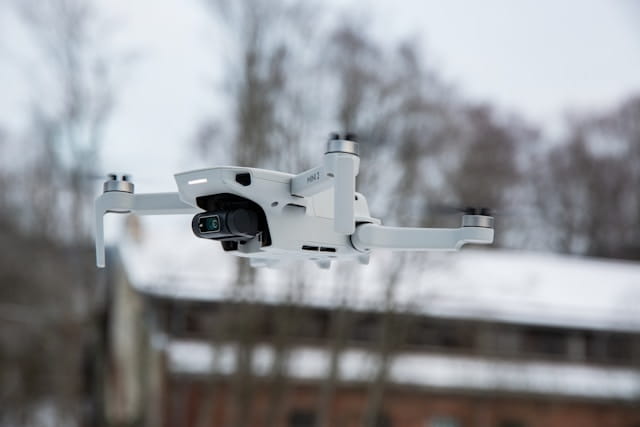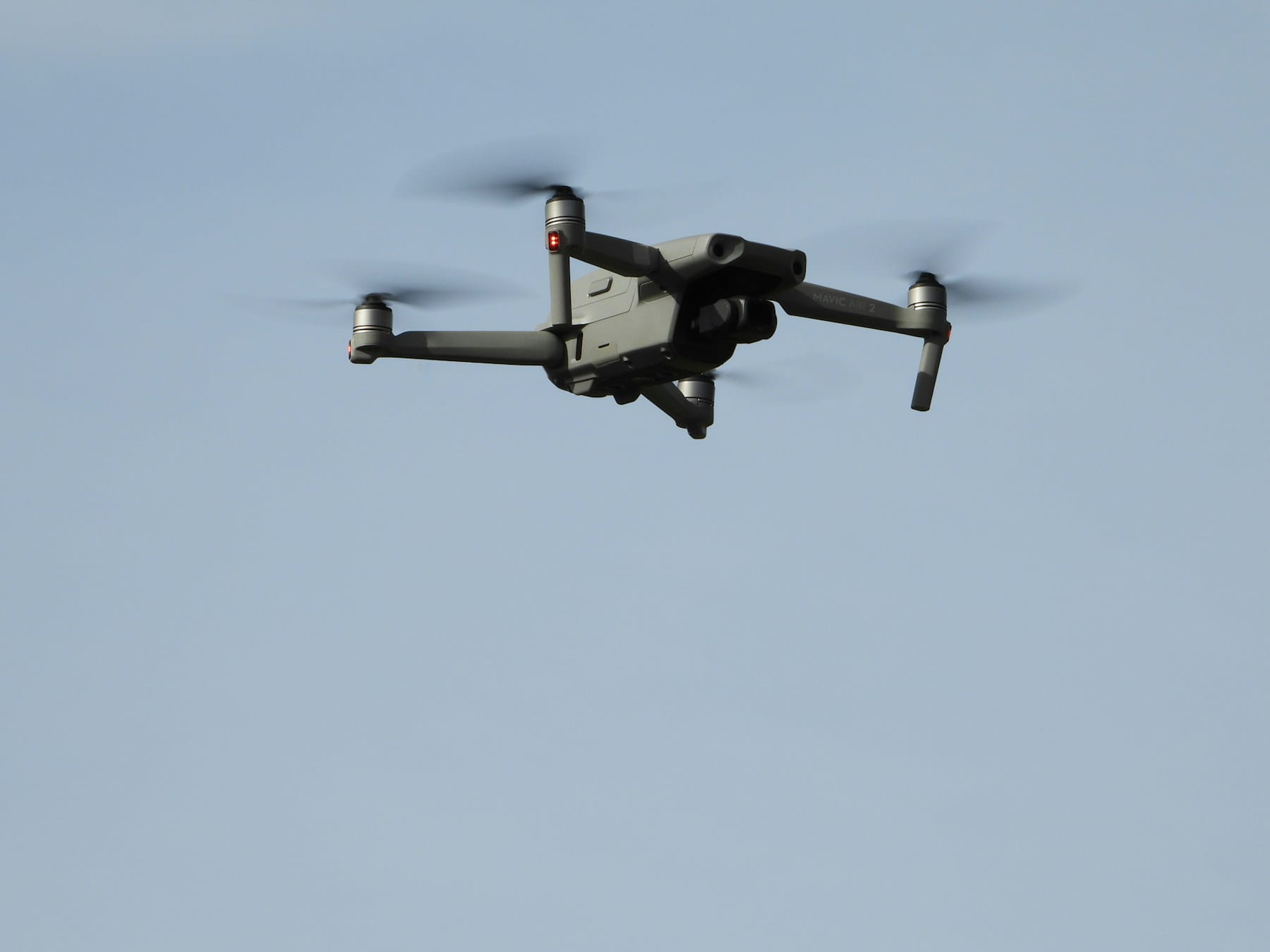Running multiple drones simultaneously presents unique challenges that go far beyond keeping individual aircraft airworthy. Fleet maintenance demands systematic approaches, predictive strategies, and robust documentation practices that scale with operational demands.
Modern drone operations span industries from construction and agriculture to emergency services and logistics. Each sector brings distinct maintenance requirements, regulatory constraints, and operational pressures that fleet managers must navigate while maintaining peak performance across all aircraft.
The financial implications of poor maintenance practices multiply exponentially with fleet size. A single grounded drone might delay one project, but systematic maintenance failures can paralyze entire operations, damage client relationships, and trigger regulatory scrutiny.
Table of contents
- Understanding fleet maintenance fundamentals
- Establishing systematic inspection protocols
- Creating comprehensive maintenance schedules
- Implementing predictive maintenance strategies
- Managing maintenance documentation and compliance
- Inventory management for spare parts and tools
- Training and certifying maintenance personnel
- Software solutions for fleet maintenance
- Cost optimization strategies
- Scaling maintenance operations
- Future trends in drone fleet maintenance
Understanding fleet maintenance fundamentals
Fleet maintenance differs significantly from single-aircraft operations. Individual drone owners might perform basic inspections before each flight and address issues as they arise. Fleet operations require standardized procedures, centralized tracking systems, and proactive maintenance strategies that prevent cascading failures across multiple aircraft.
The complexity increases with fleet diversity. Many operators manage mixed fleets containing different manufacturers, models, and configurations. Each aircraft type brings unique maintenance requirements, spare parts inventories, and specialized knowledge needs. Standardizing procedures while accommodating these differences becomes a critical balancing act.
Maintenance costs typically represent 15-25% of total operational expenses for drone fleets. This percentage can vary dramatically based on aircraft types, operational intensity, and environmental conditions. Understanding these cost drivers helps fleet managers allocate resources appropriately and identify optimization opportunities.
Risk management takes on heightened importance in fleet operations. Single aircraft failures might inconvenience individual pilots, but fleet-wide maintenance issues can ground entire operations, breach service contracts, and create liability exposures. Systematic maintenance practices serve as insurance policies against these operational risks.
Fleet maintenance also involves regulatory compliance considerations that scale with operational scope. Larger fleets face increased scrutiny from aviation authorities, more frequent inspections, and stricter documentation requirements. Building compliance into maintenance procedures from the outset prevents regulatory issues from disrupting operations.
Compliance integration: Modern drone compliance platforms help fleet managers streamline maintenance documentation and regulatory reporting while ensuring consistent adherence to aviation standards.
Establishing systematic inspection protocols
Standardized inspection procedures form the backbone of effective fleet maintenance programs. These protocols ensure consistent aircraft evaluation regardless of who performs the inspection or where it occurs. Systematic approaches catch developing issues before they become flight-safety concerns or operational disruptions.
Pre-flight inspections represent the first line of defense against maintenance-related incidents. Fleet operators need checklists that cover airframe integrity, propulsion systems, control surfaces, sensors, and payload equipment. These checklists should be specific enough to catch real problems while remaining practical for daily operations.
Systematic preparation: Implementing a comprehensive pre-flight checklist template ensures consistent inspection standards across all fleet aircraft and operators.
Visual inspections catch many common issues before they progress to component failures. Trained technicians can identify loose fasteners, damaged propellers, worn landing gear, and compromised weatherproofing during routine examinations. Documenting these findings creates maintenance histories that reveal patterns and predict future problems.
Functional testing confirms that all systems operate within acceptable parameters. Flight control checks, sensor calibrations, communication system tests, and payload verifications ensure aircraft readiness for operational missions. Automated testing sequences can streamline these processes while maintaining thoroughness.
Post-flight inspections capture operational wear and identify issues that developed during missions. Hot-section examinations, battery condition assessments, and data download procedures provide insights into aircraft health that inform future maintenance scheduling. This information proves invaluable for predictive maintenance programs.
Environmental factors significantly impact inspection requirements. Aircraft operating in dusty conditions need more frequent filter changes and cleaning cycles. Coastal operations introduce corrosion concerns that require specialized attention. Cold weather operations stress batteries and mechanical components differently than temperate conditions.
Creating comprehensive maintenance schedules
Effective maintenance scheduling balances operational availability with proactive care. Poorly planned maintenance creates aircraft shortages during peak demand periods, while deferred maintenance leads to unexpected failures and emergency repairs. Strategic scheduling optimizes both fleet utilization and long-term reliability.
Calendar-based maintenance provides predictable service intervals but may not align with actual aircraft usage patterns. Fixed schedules work well for fleets with consistent utilization but can result in premature servicing of lightly used aircraft or delayed maintenance on heavily utilized units.
Hour-based scheduling aligns maintenance activities with actual aircraft usage, providing more accurate service timing. Flight hour meters or automated logging systems track cumulative usage and trigger maintenance alerts based on predetermined thresholds. This approach optimizes maintenance timing while reducing unnecessary service activities.
Condition-based scheduling relies on aircraft health monitoring to determine maintenance needs. Sensor data, performance trends, and diagnostic information guide maintenance timing rather than arbitrary calendar or hour-based intervals. This approach can reduce maintenance costs while improving reliability when implemented properly.
Seasonal maintenance considerations affect many drone operations. Agricultural fleets face intense utilization during planting and harvest seasons, requiring different maintenance strategies than year-round operations. Public safety fleets need maximum availability during disaster response periods but may have maintenance windows during quieter periods.
Maintenance scheduling software helps fleet managers optimize service timing while maintaining operational readiness. These systems consider aircraft utilization patterns, maintenance requirements, parts availability, and technician scheduling to create efficient maintenance plans. Integration with operational planning systems prevents maintenance conflicts with scheduled missions.
Operational coordination: Effective maintenance scheduling integrates seamlessly with mission planning workflows to optimize both aircraft availability and operational efficiency.
The following table outlines typical maintenance intervals for common drone fleet components:
| Component | Inspection Interval | Service Interval | Replacement Interval |
|---|---|---|---|
| Propellers | Every 10 flight hours | Every 50 flight hours | Every 200 flight hours |
| Batteries | Every 25 cycles | Every 100 cycles | Every 500 cycles |
| Motors | Every 25 flight hours | Every 100 flight hours | Every 1000 flight hours |
| Sensors | Every 20 flight hours | Every 50 flight hours | Per manufacturer specs |
| Gimbal systems | Every 15 flight hours | Every 75 flight hours | Every 800 flight hours |
Implementing predictive maintenance strategies
Predictive maintenance represents the next evolution in fleet management, moving beyond reactive repairs and scheduled services to anticipate maintenance needs before problems develop. This approach reduces unscheduled downtime, lowers maintenance costs, and improves operational reliability.
Data collection forms the foundation of predictive maintenance programs. Modern drones generate tremendous amounts of operational data through built-in sensors, flight management systems, and payload equipment. Mining this data reveals patterns that predict component failures, performance degradation, and maintenance requirements.
Vibration analysis detects developing mechanical issues in motors, gimbals, and other rotating components. Baseline vibration signatures help identify deviations that indicate bearing wear, imbalances, or mechanical looseness. Early detection allows planned maintenance rather than emergency repairs.
Battery health monitoring predicts power system failures before they ground aircraft. Charge/discharge cycle tracking, internal resistance measurements, and capacity testing reveal battery degradation patterns. Proactive battery replacement prevents mission failures and maintains fleet availability.
Performance trend analysis identifies gradual degradation that might not trigger immediate alerts but indicates developing problems. Flight time reductions, increased power consumption, or navigation accuracy changes can signal issues requiring attention. Tracking these trends enables proactive maintenance interventions.
Machine learning algorithms can identify complex patterns in operational data that human analysts might miss. These systems learn from historical maintenance records, operational data, and failure patterns to predict future maintenance needs with increasing accuracy. Implementation requires significant data collection and analysis capabilities but can provide substantial operational benefits.
Temperature monitoring reveals thermal stress patterns that affect component longevity. Engines, electronics, and batteries all have optimal operating temperature ranges, and chronic overheating shortens component life. Thermal management through maintenance scheduling and operational procedures extends equipment life.
Managing maintenance documentation and compliance
Comprehensive documentation serves multiple purposes in fleet maintenance operations. Regulatory compliance, warranty protection, operational planning, and liability management all depend on accurate, complete maintenance records. Electronic documentation systems streamline record-keeping while improving accessibility and analysis capabilities.
Maintenance logs capture all service activities, including routine inspections, repairs, component replacements, and modifications. These logs should include dates, technician signatures, work descriptions, parts used, and follow-up requirements. Digital logging systems can automate much of this documentation while ensuring completeness.
Component tracking maintains histories for individual parts throughout their service lives. Serial number tracking, installation dates, service records, and replacement schedules help optimize inventory management and predict future needs. This information proves valuable for warranty claims and failure analysis.
Work order systems organize maintenance activities and ensure nothing falls through the cracks. Digital work orders can include photographs, technical references, safety requirements, and quality control checkpoints. Completed work orders become permanent maintenance records and inform future service planning.
Regulatory compliance documentation varies by jurisdiction and operational type. Commercial drone operations typically require more extensive record-keeping than recreational flying. Understanding applicable regulations and building compliance into documentation procedures prevents regulatory issues from disrupting operations.
Quality control procedures ensure maintenance work meets established standards. Independent inspections, standardized checklists, and approval processes catch errors before aircraft return to service. Quality control documentation demonstrates due diligence and supports continuous improvement efforts.
Audit trails provide chronological records of all maintenance activities and decisions. These trails support regulatory inspections, insurance investigations, and operational reviews. Electronic systems can automatically generate audit trails that would be impossible to maintain manually.
Inventory management for spare parts and tools
Effective inventory management balances parts availability with carrying costs. Excessive inventory ties up capital and storage space, while insufficient inventory grounds aircraft waiting for parts. Strategic inventory planning optimizes this balance while maintaining operational readiness.
Critical parts identification prioritizes inventory investment on components that most significantly impact operations. Flight-critical components, high-wear items, and long lead-time parts deserve higher inventory priority than easily available or less critical components. Risk assessment helps determine appropriate inventory levels for different part categories.
Vendor relationships significantly impact parts availability and costs. Establishing partnerships with reliable suppliers ensures parts availability when needed. Negotiating volume discounts, emergency delivery terms, and technical support agreements can provide competitive advantages and operational benefits.
Parts forecasting uses historical consumption data and operational planning to predict future needs. Seasonal demand patterns, fleet expansion plans, and operational changes all influence parts requirements. Accurate forecasting reduces both stockouts and excess inventory.
Inventory rotation prevents parts degradation from extended storage. Batteries, rubber components, and electronic devices have limited shelf lives that require attention in inventory management. First-in-first-out rotation policies ensure older parts get used before degrading.
Tool management ensures maintenance capabilities remain available when needed. Specialized tools, calibration equipment, and diagnostic devices represent significant investments that need protection and proper maintenance. Tool tracking systems prevent loss and ensure availability.
Storage conditions affect parts longevity and reliability. Temperature control, humidity management, and contamination prevention preserve parts quality during storage. Proper storage reduces parts costs and improves maintenance reliability.
The following list outlines essential spare parts categories for most drone fleets:
- Propellers and propeller hardware
- Batteries and charging equipment
- Motors and motor components
- Landing gear and shock absorption components
- Camera and gimbal components
- Electronic speed controllers
- Flight control computers and sensors
- Communication equipment and antennas
- Wiring harnesses and connectors
- Protective cases and transport equipment
Training and certifying maintenance personnel
Qualified maintenance personnel form the backbone of successful fleet operations. Training programs ensure technicians possess the knowledge and skills needed to maintain aircraft safely and effectively. Certification processes validate competency and provide confidence in maintenance quality.
Basic maintenance training covers fundamental aircraft systems, safety procedures, and documentation requirements. Technicians need understanding of aerodynamics, electrical systems, mechanical components, and software interfaces. This foundation enables safe and effective maintenance work across different aircraft types.
Manufacturer-specific training addresses unique characteristics of individual aircraft models. Different manufacturers use varying design philosophies, component specifications, and service procedures. Technicians working on diverse fleets need training on each aircraft type to maintain them properly.
Specialized skills training covers advanced maintenance techniques like electronics troubleshooting, composite repairs, and sensor calibration. These skills often require significant investment in training and equipment but prove valuable for fleet operations that want to perform advanced maintenance in-house.
Safety training prevents accidents and injuries during maintenance activities. Electrical safety, chemical handling, mechanical hazards, and personal protective equipment use all require specific training. Regular safety refresher training maintains awareness and reduces accident risks.
Certification programs validate technician competency and provide standardized skill recognition. Industry certifications, manufacturer qualifications, and internal competency assessments help ensure consistent maintenance quality. Regular recertification maintains currency with evolving technologies and procedures.
Cross-training develops versatility in maintenance teams by teaching multiple skills to individual technicians. This approach provides operational flexibility and reduces dependence on specialized personnel. Cross-training works well for smaller fleets but may be less practical for large operations with specialized maintenance requirements.
Software solutions for fleet maintenance
Modern maintenance management relies heavily on software solutions that streamline documentation, scheduling, inventory management, and analysis. These systems provide capabilities that would be impossible to achieve with manual processes while reducing administrative overhead and improving decision-making.
Maintenance management software centralizes all maintenance-related information in accessible databases. Work orders, maintenance histories, parts inventories, and technician schedules integrate into comprehensive systems that support operational planning and regulatory compliance.
Mobile applications enable real-time maintenance documentation and access to technical information. Technicians can update work orders, access service manuals, and photograph maintenance activities using portable devices. This capability improves documentation accuracy while reducing administrative delays.
Integration with operational systems provides comprehensive fleet visibility. Maintenance software that connects with flight planning, operational scheduling, and aircraft tracking systems enables better coordination and resource allocation. This integration prevents maintenance conflicts with operational requirements.
Reporting capabilities transform maintenance data into actionable insights. Trend analysis, cost reporting, and reliability metrics help fleet managers identify improvement opportunities and optimize maintenance strategies. Custom reporting enables analysis specific to individual operational requirements.
Cloud-based solutions provide accessibility and scalability that traditional on-premise systems cannot match. Distributed maintenance teams can access current information regardless of location, while automatic updates ensure everyone works with current software versions. Cloud solutions also provide backup and recovery capabilities that protect against data loss.
Artificial intelligence features in advanced maintenance software can identify patterns and predict maintenance needs. Machine learning algorithms analyze operational data, maintenance histories, and failure patterns to recommend proactive maintenance actions. These capabilities become more valuable as data volumes and complexity increase.
Cost optimization strategies
Maintenance costs represent significant operational expenses that fleet managers need to control without compromising safety or reliability. Strategic cost management involves analyzing spending patterns, identifying optimization opportunities, and implementing practices that reduce long-term maintenance expenses.
Labor costs typically represent the largest maintenance expense category. Optimizing technician utilization, reducing travel time, and streamlining maintenance procedures can significantly impact overall costs. Training investments that improve technician efficiency often provide positive returns through reduced labor requirements.
Parts costs can be managed through strategic purchasing, inventory optimization, and supplier negotiations. Volume purchasing, group buying cooperatives, and long-term contracts often provide cost advantages. However, excessive inventory carrying costs can offset purchasing savings if not managed properly.
Preventive maintenance reduces long-term costs by preventing expensive failures and extending component life. While preventive maintenance requires upfront investment, it typically provides positive returns through reduced emergency repairs and improved aircraft availability.
Maintenance facility costs include rent, utilities, equipment, and support services. Optimizing facility utilization, sharing resources among multiple fleets, and strategic location selection can reduce these costs. Some operations find outsourcing certain maintenance activities more cost-effective than maintaining internal capabilities.
Warranty management maximizes manufacturer support for covered components. Tracking warranty periods, understanding coverage limitations, and properly documenting failures ensures maximum warranty benefits. Good warranty management can significantly reduce parts and labor costs.
Life-cycle cost analysis considers total ownership costs rather than just initial purchase prices. Components with higher initial costs but longer service lives or lower maintenance requirements may provide better value than cheaper alternatives. This analysis helps optimize purchasing decisions and maintenance strategies.
Scaling maintenance operations
Growing drone fleets require scalable maintenance approaches that maintain quality and efficiency as operations expand. Scaling involves more than simply adding technicians and facilities - it requires systematic approaches that preserve operational effectiveness while accommodating increased complexity.
Standardization becomes increasingly important as fleets grow. Common procedures, documentation formats, and training standards ensure consistency across multiple locations and technicians. Standardization also enables economies of scale in training, tooling, and parts inventory.
Automation reduces manual workload and improves consistency in routine maintenance tasks. Automated testing sequences, digital documentation systems, and inventory management software can handle increased transaction volumes without proportional increases in administrative staff.
Regional maintenance capabilities become necessary as fleets spread geographically. Centralized maintenance works for small fleets but becomes impractical as operations expand. Regional facilities with appropriate capabilities and inventory enable responsive maintenance support for distributed operations.
Outsourcing relationships can provide specialized capabilities without internal investment. Component overhauls, specialized repairs, and periodic inspections might be more cost-effective when outsourced to specialized providers. Strategic outsourcing enables fleet growth without proportional internal capability expansion.
Performance metrics become critical for managing larger operations. Key performance indicators help identify problems before they become major issues while measuring the effectiveness of maintenance programs. Metrics also enable benchmarking and continuous improvement efforts.
Organizational structure needs to evolve with fleet size. Small fleets might manage with informal maintenance coordination, but larger operations need formal management structures, defined responsibilities, and clear communication channels. Proper organization prevents maintenance activities from becoming chaotic as complexity increases.
Future trends in drone fleet maintenance
The drone industry continues evolving rapidly, bringing new technologies and approaches that will transform fleet maintenance practices. Understanding these trends helps fleet managers prepare for future challenges and opportunities while making strategic investment decisions.
Artificial intelligence integration will revolutionize predictive maintenance capabilities. Machine learning algorithms will analyze vast amounts of operational data to predict failures with increasing accuracy. AI-powered diagnostics will identify problems that human technicians might miss while recommending optimal maintenance strategies.
Autonomous maintenance capabilities may emerge as drones become more sophisticated. Self-diagnostic systems could identify problems and recommend corrective actions, while some maintenance tasks might be automated through robotic systems. These capabilities would reduce human workload while improving maintenance consistency.
Remote maintenance support using augmented reality and telepresence technologies will enable expert assistance regardless of location. Technicians will access real-time guidance from specialists while performing complex procedures. This capability will be particularly valuable for operations in remote locations or during critical maintenance situations.
Blockchain technology may transform maintenance documentation and parts authentication. Immutable maintenance records would provide unprecedented audit trails and prevent documentation fraud. Parts authentication through blockchain could eliminate counterfeit components while ensuring supply chain integrity.
Sustainability considerations will increasingly influence maintenance practices. Environmental impact assessment, recycling programs, and sustainable parts sourcing will become standard practices. Fleet managers will need to balance operational requirements with environmental responsibilities.
Regulatory evolution will continue shaping maintenance requirements as drone operations become more complex and widespread. Advanced air mobility operations, urban drone delivery, and beyond visual line of sight operations will bring new maintenance standards and requirements. Staying current with regulatory changes will remain a constant challenge for fleet managers.
Streamline Your Fleet Maintenance Operations
Managing drone fleet maintenance requires systematic approaches, quality documentation, and strategic planning that scales with operational demands. Success depends on balancing proactive maintenance with operational requirements while controlling costs and maintaining regulatory compliance.
The complexity of modern drone operations demands sophisticated maintenance management capabilities that go far beyond individual aircraft care. Fleet managers who invest in proper systems, training, and procedures will find themselves well-positioned to capitalize on the growing opportunities in commercial drone operations.
As drone technology continues advancing and regulations evolve, maintenance practices must adapt accordingly. Fleet managers who stay current with industry trends and continuously improve their maintenance programs will maintain competitive advantages while ensuring safe, reliable operations.
Ready to optimize your fleet maintenance strategy?
DroneBundle's comprehensive fleet management platform transforms maintenance from a burden into a streamlined process. Our integrated system combines maintenance scheduling, documentation tracking, inventory management, and compliance reporting in one powerful platform.
Start your free trial today and discover how automated maintenance management can reduce costs, improve fleet availability, and ensure regulatory compliance. No credit card required.
Book a demo to see how DroneBundle's fleet maintenance features can help you scale your operations while maintaining the highest safety and reliability standards.



